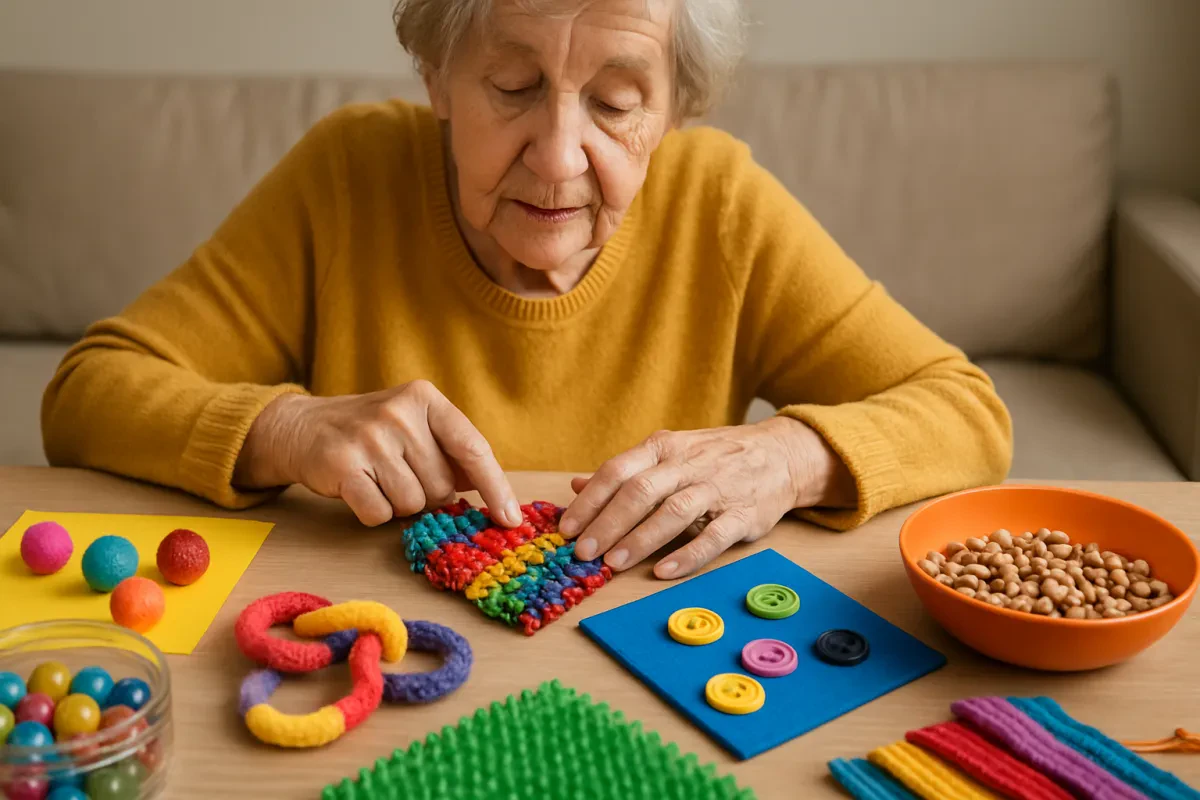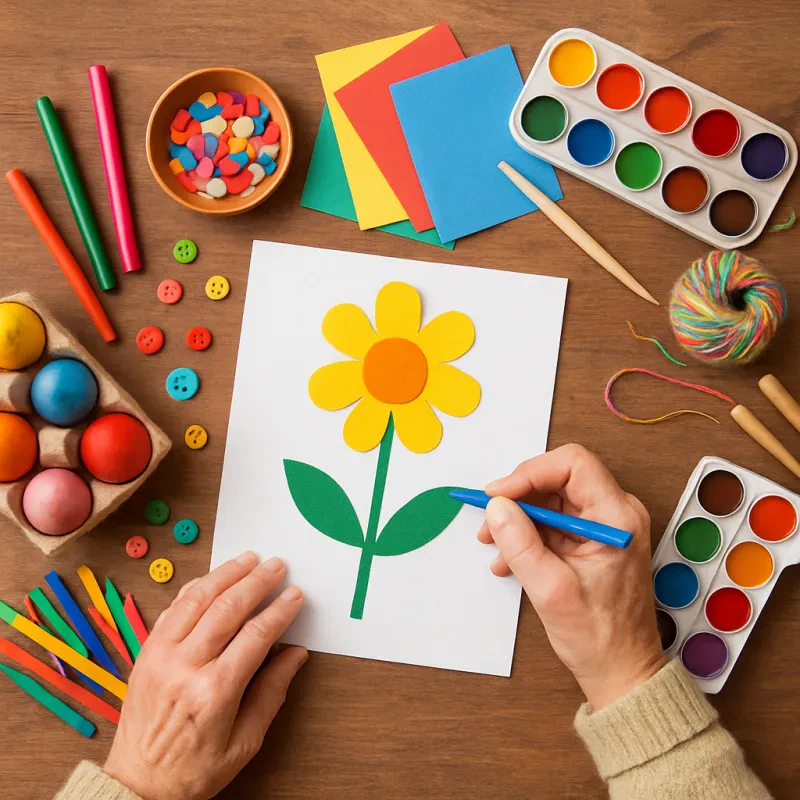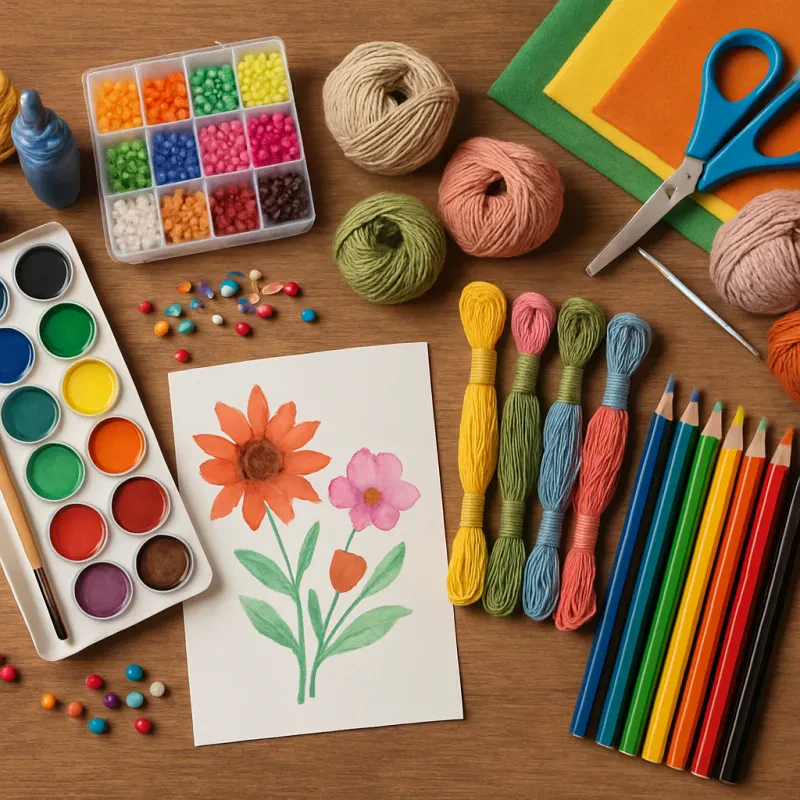Creative Activities for Dementia Sufferers to Engage, Comfort, and Connect.
Living with Alzheimer’s or dementia can make day-to-day life feel challenging, not only for the individual but also for their loved ones and caregivers. While memory loss can be difficult, creative activities—especially sensory and stimulation-based crafts—offer a powerful way to spark joy, encourage connection, and support overall well-being.
Crafting is more than just “making things.” For those with dementia, it’s an opportunity to engage the senses, trigger positive memories, reduce agitation, and give a sense of accomplishment. Even simple projects can promote comfort and calm while providing meaningful moments to share with family.
Why Sensory Crafts are Beneficial for Dementia
Sensory crafts focus on engaging sight, touch, smell, and sometimes sound, offering stimulation without overwhelming the individual.
These activities can:
- Encourage cognitive engagement by activating different areas of the brain
- Trigger happy memories through familiar textures, colors, or scents
- Promote relaxation and reduce stress or agitation
- Support motor skills through gentle, repetitive movements
- Foster connection between the person and their caregiver or loved ones
For people in later stages of dementia, sensory-focused crafts are often more successful than complex projects because they focus on the experience—not the outcome.
Key Tips for Crafting with Dementia
Before diving into project ideas, here are some essential tips to make crafting safe, accessible, and enjoyable:
- Keep it Simple – Use straightforward steps and avoid activities with too many instructions at once.
- Prioritize Safety – Choose non-toxic, washable materials and avoid sharp tools.
- Focus on Familiarity – Incorporate colors, textures, or themes the person has enjoyed in the past.
- Encourage, Don’t Correct – The goal is the process, not perfection.
- Engage the Senses – Use soft fabrics, scented materials, or natural elements to create a multi-sensory experience.
Sensory & Stimulation-Focused Craft Ideas for Dementia
Here are some gentle, dementia-friendly craft ideas you can try at home or in care settings.
1. Tactile Fidget Mats
A fidget mat is a fabric square with sewn-on items like ribbons, zippers, buttons, and textured patches.
- Why it works: Helps keep hands busy, reduces restlessness, and provides comfort.
- Materials: Felt squares, sewing kit or fabric glue, ribbons, lace, fabric scraps, beads (securely attached).
2. Scented Play Dough
Soft, malleable dough scented with lavender, cinnamon, or vanilla.
- Why it works: Stimulates touch and smell while promoting relaxation.
- Materials: Homemade or store-bought play dough, essential oils or spices.
- Tip: Keep scents mild to avoid overwhelming the senses.
3. Textured Collages
Create art using a mix of textured materials such as sandpaper, cotton balls, feathers, and fabric scraps.
- Why it works: Encourages exploration of different textures and colors.
- Materials: Glue sticks, cardstock, fabric scraps, textured papers, natural items like dried leaves.
4. Painting with Large Brushes or Sponges
Instead of small paintbrushes, use larger, easier-to-hold tools for painting.
- Why it works: Offers visual stimulation and creative expression without fine detail work.
- Materials: Washable paints, large sponge brushes, thick paper or canvas board.
5. Nature Sensory Trays
Fill a tray with natural elements—pinecones, shells, smooth stones, dried flowers—and encourage touch and gentle arrangement.
- Why it works: Nature-based sensory input can be calming and memory-evoking.
- Materials: Tray or shallow basket, natural items collected safely.
6. Seasonal Sensory Crafts
Adapt projects to holidays or seasons for added meaning, such as making scented cinnamon ornaments at Christmas or pastel sponge paintings in spring.
- Why it works: Seasonal cues can help with time orientation and create festive joy.
Making Craft Time Meaningful
When crafting with someone who has dementia, remember that the journey matters more than the finished product. Laugh together, share stories, and enjoy the sensory experience. Even short sessions can lift mood and bring connection.
For caregivers, these moments can also be deeply rewarding—offering a break from routine and a way to bond beyond words.
Final Thoughts
Sensory and stimulation-focused crafts for dementia offer comfort, joy, and a gentle way to keep minds and hands engaged.
Whether you’re a family member, friend, or professional caregiver, these activities can transform ordinary afternoons into moments of creativity and connection.



